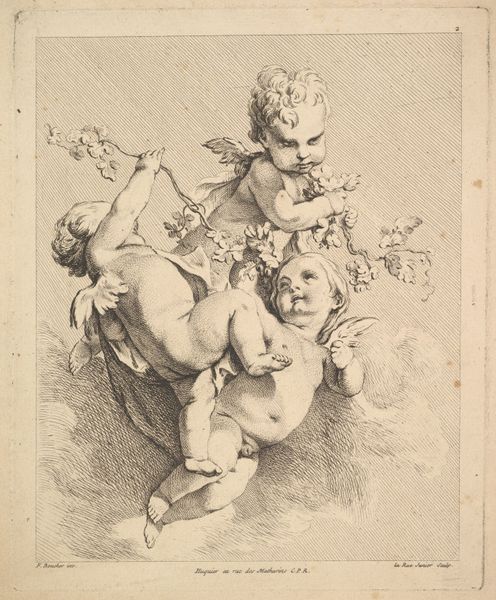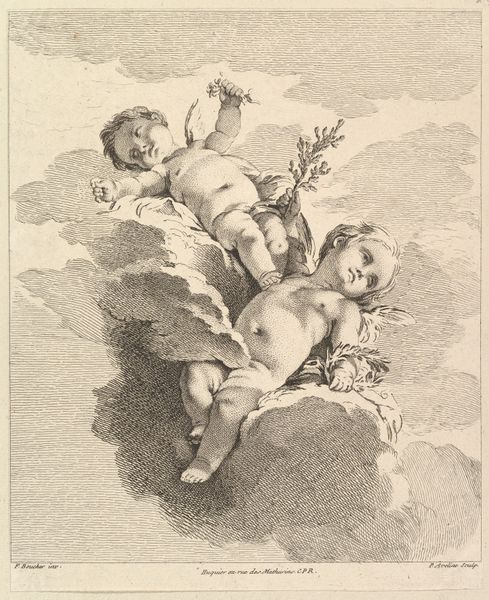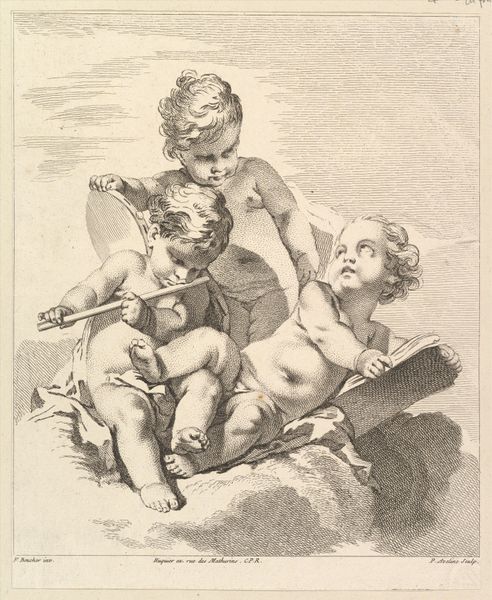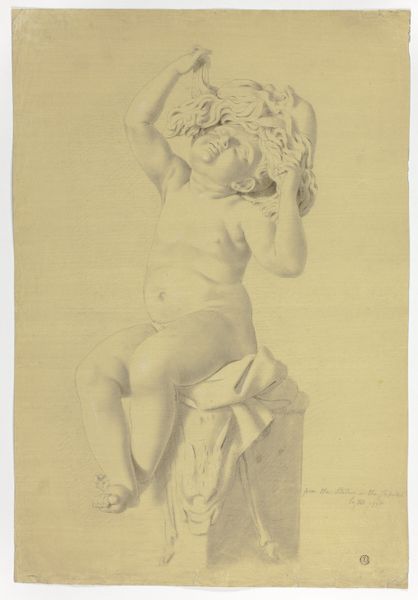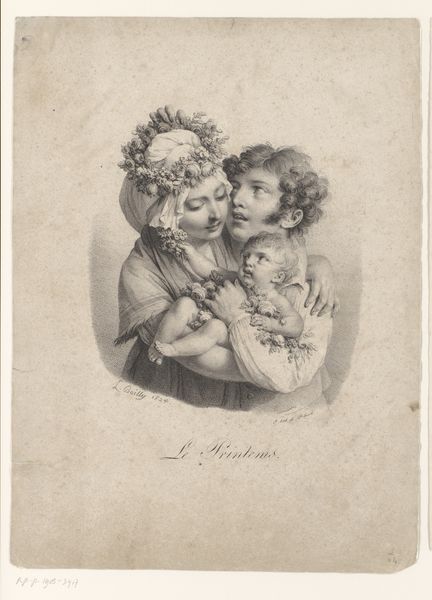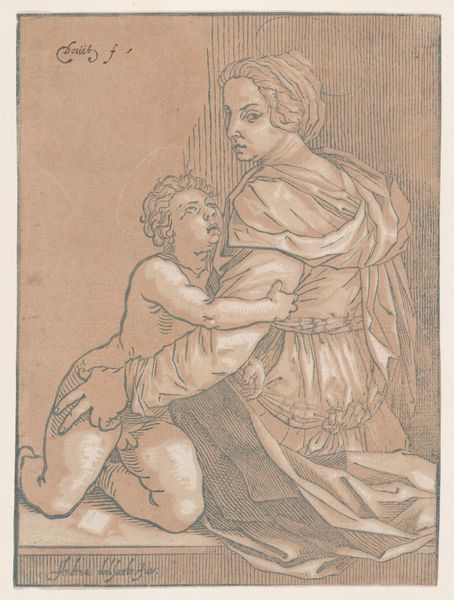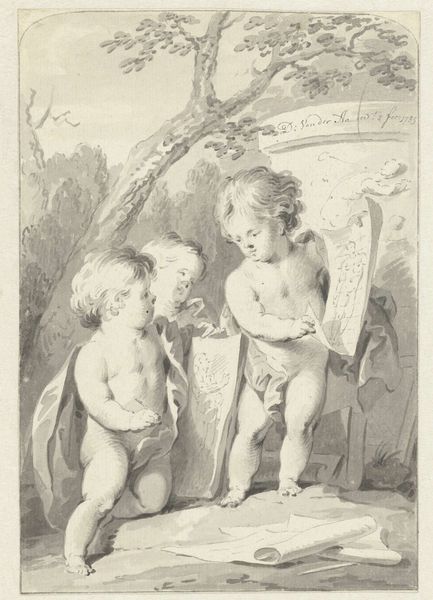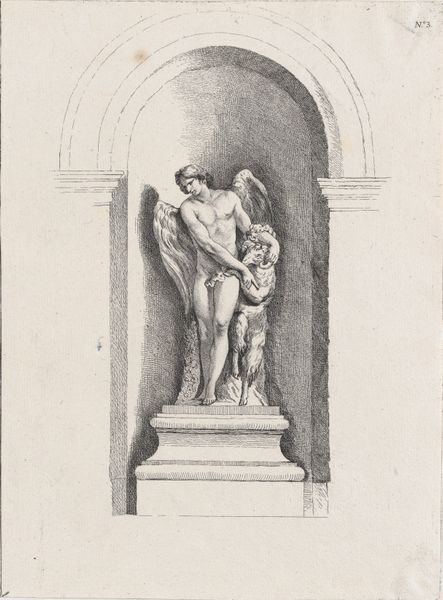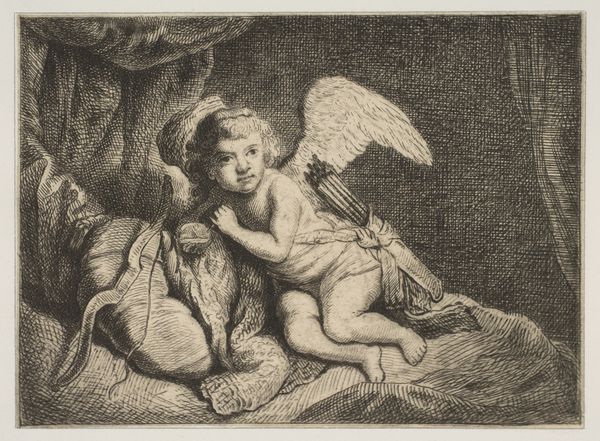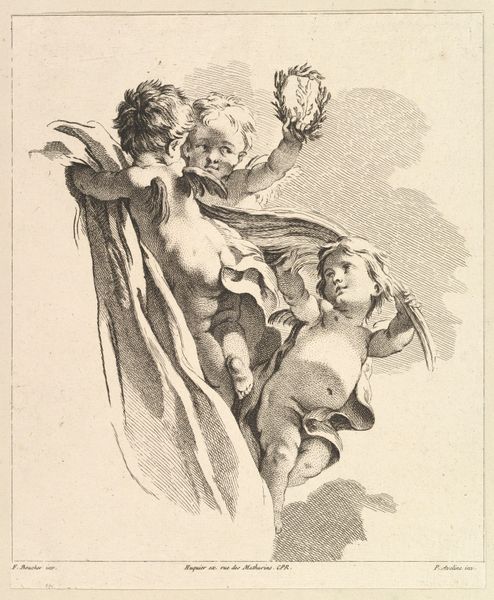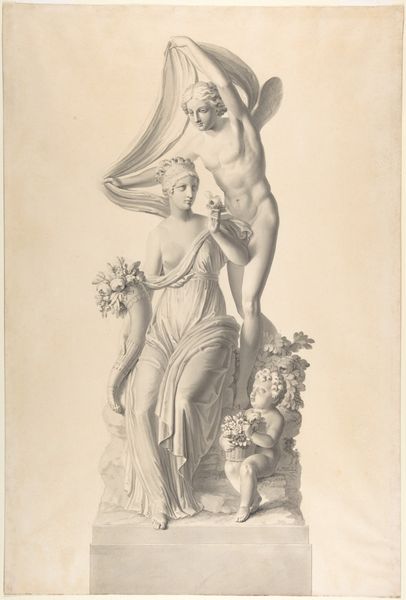
Dimensions: 179 mm (height) x 120 mm (width) (bladmaal)
Editor: This engraving, "Amor og Bakkus," created between 1826 and 1893 by H. C. Henneberg, depicts Cupid and Bacchus together, but there's a peculiar vulnerability to the figures despite the allegorical themes, what historical context informs this unusual scene? Curator: Seeing Amor and Bacchus together suggests a commentary on societal pleasures. Note the sharp lines typical of engravings - these weren't easily reproducible for the wider public initially, making the consumption of its imagery quite elite. The rise of romanticism contributed to sentimental artistic style that influenced socio-political attitudes. Who has access to idealized scenes and how might they react to the subjects portrayed? Editor: That’s fascinating. I didn’t think about the limited access. So the sentimental style had a political impact as well? Curator: Absolutely. The Romantics pushed back against Enlightenment rationalism with emotional expression. Now consider how art academies and galleries determined what stories like these should be visually celebrated or criticized. How might these two forces together determine an artists recognition in a time period? Editor: So this work, through its themes of love and wine, as well as being a print of Romantic style, participates in broader social conversations through institutions. That definitely shifts my understanding of it. Thank you! Curator: Precisely! By understanding those broader networks we may find some surprising nuances within those lines.
Comments
No comments
Be the first to comment and join the conversation on the ultimate creative platform.
